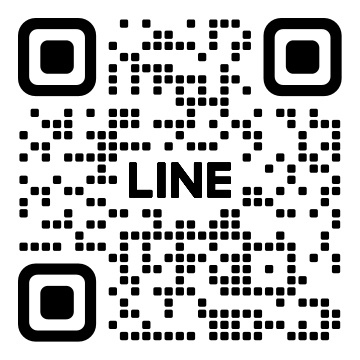《心理摩擦力》推動數位轉型新策略:破解團隊抗拒,助團隊"蛇"麼都變強!!!!
推動數位轉型新策略:
破解團隊抗拒,助團隊"蛇"麼都變強!!!!
導入新科技時,為什麼團隊總是抗拒?
當大多人都是使用"正向吸引力"或"懲處命令力",卻不管用
或許,問題不在技術與工具不夠好,而是心理抗拒力在作怪!
**數位轉型的4大心理阻力**
📌 慣性:「我們一直這樣做,為什麼要改?」
➡️ 人們習慣舊系統,即便新方法更好,也難以改變。
📌 惰性:「學這個要花多少時間?」
➡️ 變革需要學習成本,繁瑣的流程讓人卻步。
📌 情感阻力:「這會讓我被淘汰嗎?」
➡️ 員工擔心新技術取代自身價值,抗拒變革。
📌 反彈心理:「老闆越催,我越不想學!」
➡️ 強迫導入新系統,反而讓員工更抗拒。
案例:買新沙發 vs. 數位轉型
「海灘家居」讓客戶自由設計沙發,但銷量不佳,因為客戶不知如何處理舊沙發。
這與數位轉型相似,員工不是不願用新系統,而是擔心舊數據、舊流程怎麼辦。
✅ 提供轉換指南
✅ 設立技術支援
✅ 讓員工參與測試,提升認同感
案例:蛋糕粉的啟示 vs. 轉型專案參與度
早期蛋糕粉只要加水便可製成蛋糕,十分方便,但卻乏人問津;
直到廠商改變製程,要求消費者「自己打蛋」再加入「新版蛋糕粉」,
銷量才暴增。
適度「麻煩」反而更成功
✅ 讓員工參與系統設計
✅ 減少強制推行,增加自主選擇權
✅ 設計有趣的學習挑戰
數位轉型前,該問這4個問題!
✔ 1.團隊面對哪些「慣性」挑戰?✔ 2.如何降低「惰性」帶來的抗拒?
✔ 3.員工的「情感阻力」來自何處?
✔ 4.如何避免讓改變變成「強迫」?
如果你也在為數位轉型的阻力頭痛,《心理摩擦力》這本書絕對值得一讀!
你的團隊在數位轉型中遇到哪些挑戰?
留言分享你的經驗,我們一起破解心理摩擦力!
我將《心理摩擦力》讀後心得,應用在數位轉型場景,
製作成字卡,分享給大家
字卡連結 :
若還沒使用AI簡報生成工具的朋友可以使用以下Gamma推薦碼,
我們雙方都可得200 點點數喔!
https://gamma.app/signup?r=049b1btj5mxfqmg
#企業變革 #行為心理學
|
心理摩擦力 |
描述 |
對採用的影響 |
克服策略 |
|
慣性 |
天生傾向於維持現狀。 |
購買者往往會選擇熟悉的產品或流程,即使有更優秀的替代方案。 |
創造令人信服的改變理由,凸顯顯著的好處,並讓轉換看起來不可避免。 |
|
努力 |
採用新方案所需的實際或感知工作量。 |
感知或實際的努力過高會使購買者因為麻煩或時間投入而猶豫不前。 |
簡化流程、優化使用體驗,降低學習曲線,以減少轉換所需的「啟動能量」。 |
|
情感阻力 |
與改變相關的恐懼、焦慮或不確定等負面情緒。 |
情感上的抗拒可能會蓋過理性上的利益,讓購買者避免嘗試新方案。 |
同理回應疑慮,建立信任(例如提供安心保證和社會認同),並展示改變如何改善現狀。 |
|
反彈 |
當人們感受到被強迫或過度施壓改變時的本能反彈。 |
當改變被視為強加,購買者可能會出於想要保留自主權而徹底拒絕。 |
強調選擇與自主,讓購買者參與決策過程,並將改變塑造成合作性的改進而非命令。 |
表格總結《心理摩擦力》主要觀點,
強調成功的改變不僅在於增加吸引力,更在於減少心理摩擦力,以促使採用和前進。
|
Psychological Friction |
Description |
Impact on Adoption |
Strategies to Overcome |
|
Inertia |
The natural tendency to stick with the status
quo. |
Buyers often remain with familiar products or
processes, even when superior alternatives exist. |
Create compelling reasons to change, highlight
significant benefits, and make the transition seem inevitable. |
|
Effort |
The perceived or actual amount of work
required to adopt a new solution. |
High perceived effort deters buyers from
trying new options due to the hassle or time investment involved. |
Simplify processes, streamline user
experiences, and reduce the learning curve to lower the “activation energy”
needed for change. |
|
Emotion |
Negative feelings such as fear, anxiety, or
uncertainty associated with change. |
Emotional resistance can override logical
benefits, causing buyers to avoid new solutions that trigger discomfort. |
Address concerns empathetically, build trust
through reassurance and social proof, and demonstrate how the change can
improve their situation. |
|
Reactance |
The instinctive pushback when people feel
forced or overly pressured to change. |
When change is perceived as imposed, buyers
may reject it outright as a way to reclaim control. |
Emphasize choice and autonomy, involve buyers
in the decision-making process, and frame the change as a collaborative
improvement rather than a mandate. |
This
table encapsulates the main themes of "The Human Element": successful change isn’t just about adding attractive features (fuel) but about
reducing these psychological frictions (barriers) to drive acceptance and
meaningful improvement.










留言
張貼留言